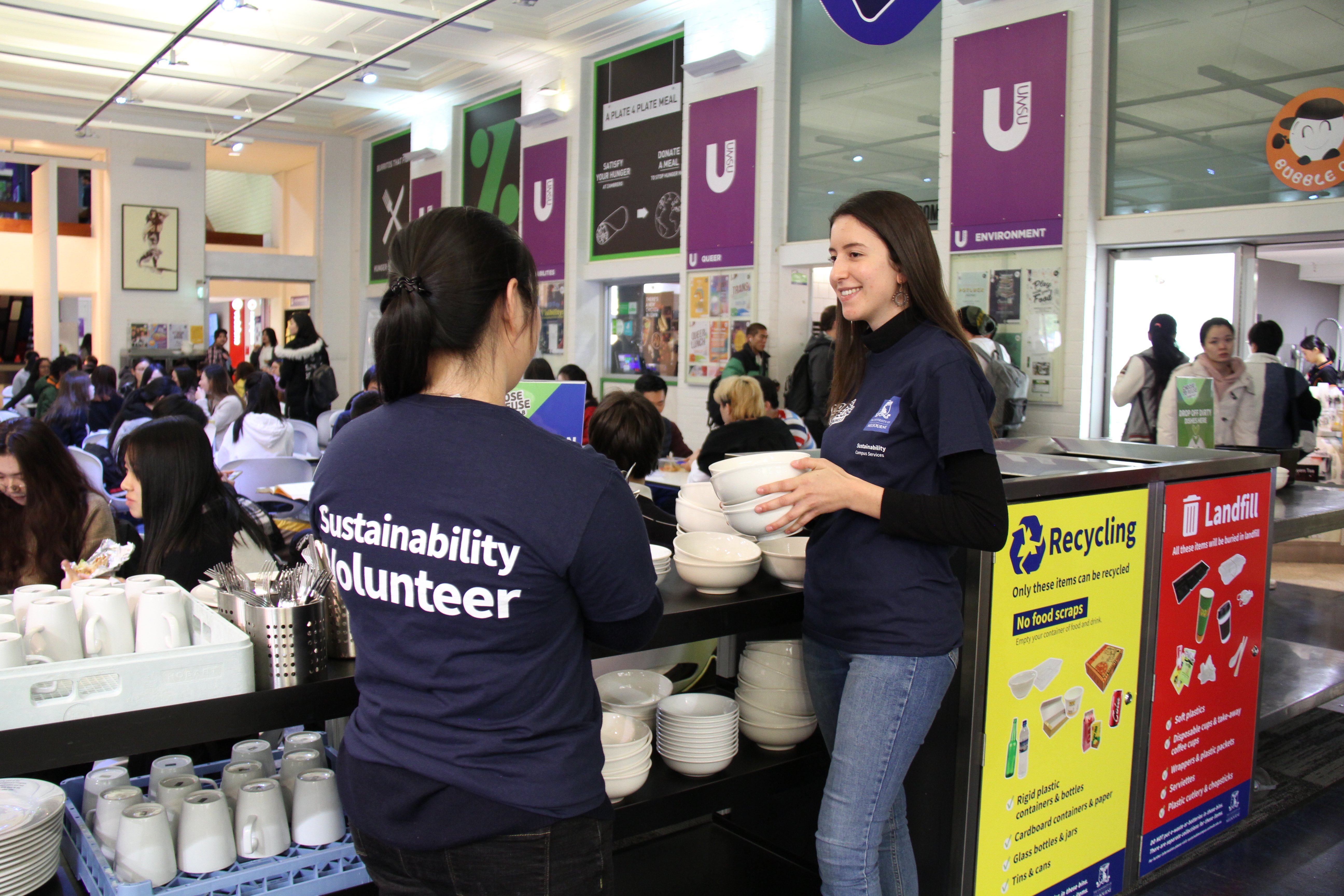
Reduce, reuse and recycle for a circular economy

Using a university campus as a ‘living laboratory’, a new study evaluates what materials universities use, their associated environmental effects and how to curb them
Published 23 March 2020
Humans are extracting and consuming unprecedented quantities of materials. And as our resources are shrinking, our population keeps growing.
This paradox, compounded by shocks to Australia’s waste and recycling sectors, have stimulated interest in the circular economy where we use products for as long as possible and then recover and regenerate materials at the end of their life. This is in contrast to a traditional linear economy where products are made, used and disposed.

We set out to understand how the University of Melbourne, as an example of a large entity, can support a transition to a circular economy and to identify useful metrics to help prioritise efforts.
Universities are large institutions requiring significant resources and hosting thousands of students and staff – over 60,000 for the University of Melbourne. More importantly, they are innovation hubs with a mission to educate future generations, making an ideal ‘living laboratory’ for the transition to a more circular economy.

University campus and material flows
To systematically assess the material flow through the Parkville campus, we used waste disposal data and bin audits for 2017 and University procurement data for the same year to estimate materials coming in.
From the procurement data comprising more than 400,000 financial transactions, we identified 11,555 transactions associated with material purchases – the rest being related to services, travel and the like.
We mapped the transactions to 189 standard material categories, such as a paper ream, a desk, a milk bottle, or a computer screen.
For each category we estimated mass, cost and the energy, water and greenhouse gas emissions associated with production, from raw material extraction to the gate of the factory, using a macro-economic approach or the behaviour and performance of the whole economy.

Results show that 2,280 tonnes of day-to-day materials exited the Parkville campus as waste or recycling in 2017. Approximately 5 per cent of this could be clearly linked with direct University procurement.
The remainder is predicted to be materials brought in by on-campus food and beverage suppliers, students and staff. This waste consisted mostly of food waste and packaging.

It is important to note that these numbers do not include construction-related material flows. This did not undermine the analysis because the University’s major construction projects are relatively self-contained in terms of their material flows.
We also did not model the amount of time each material would spend on campus, for example a ream of paper may be used within a year, whereas a desk would be on campus for many years.
Our model therefore includes inputs for 2017, but the outputs may have come onto campus in 2017 or previous years. Filtering the data might have left some material inputs out, but we estimate these to be negligible.
The modelled procurement-related material purchases represented 22,587 giga joules (GJ) of energy (each GJ is one billion joules), 1,477 kilo tonnes of carbon dioxide equivalent (ktCO2e) of greenhouse gas emissions, 30,891 kilo litres (kL) of water, and AU$3.46M in cost. [Full infographic here].

This is enough energy to build at least 8 new average Australian houses, the tailpipe greenhouse gas emissions of approximately 9,000 cars driving from Melbourne to Sydney, and enough water to fill 12 Olympic swimming pools, every year.
A key point arising from this analysis is that mass is not a good indicator of embodied environmental effects. For example, electronics was the 6th highest stream by mass, but highest for all estimated effects.

Towards a more circular economy on campus and beyond
Our analysis reveals important factors when it comes to material flows on university campuses and for other institutions.
Firstly, institutions should consider material flows that they can influence, as well as those within their direct control, to wage the war on waste and loop their material flows.
For the University, this includes influencing tenants through lease conditions and supporting them with infrastructure, as well as educating staff and students. Education about reducing material use, reusing, repurposing, and recycling is critical.
We strongly support the ban of single-use food and beverage containers on campus in favour of reusable food and beverage containers and packaging. This avoids the use of materials with very little and short-lived value.

The University’s plate washing initiative at the campus’s main food retail building enables retailers to reduce single-use packaging through a centralised service for washing re-usable plates and cutlery.
Secondly, institutions should encourage reusing and recycling furniture and electronics wherever possible as these represent significant environmental effects and cost.

Sciences & Technology
The costs and benefits of a clean economy
The University of Melbourne has set up its University of Melbourne Reuse Centre, which recovers and repurposes furniture and electronics for internal use.
Based on data from the centre in 2018, the Reuse Centre facilitated the reuse of 4,413 items, diverting approximately 89,000 kg of waste from landfill.
Thirdly, more reliable data would enable faster and better understanding of procurement and material flows.
Better data systems, that already contain multiple metrics on the materials, flowing from suppliers and producers, would enable decision-makers to make better informed decisions and tackle waste and environmental issues from the start.

As major clients and innovative entities, universities should lead by example and implement rigorous data systems that facilitate the evaluation of their material flows in a rapid manner and therefore enable decision-making.
By improving our understanding of the material and environmental flows, we will pave the way for measures that help achieve a more circular economy and demonstrate its potential to the future generations of professionals, leading by example.
Banner: Getty Images



